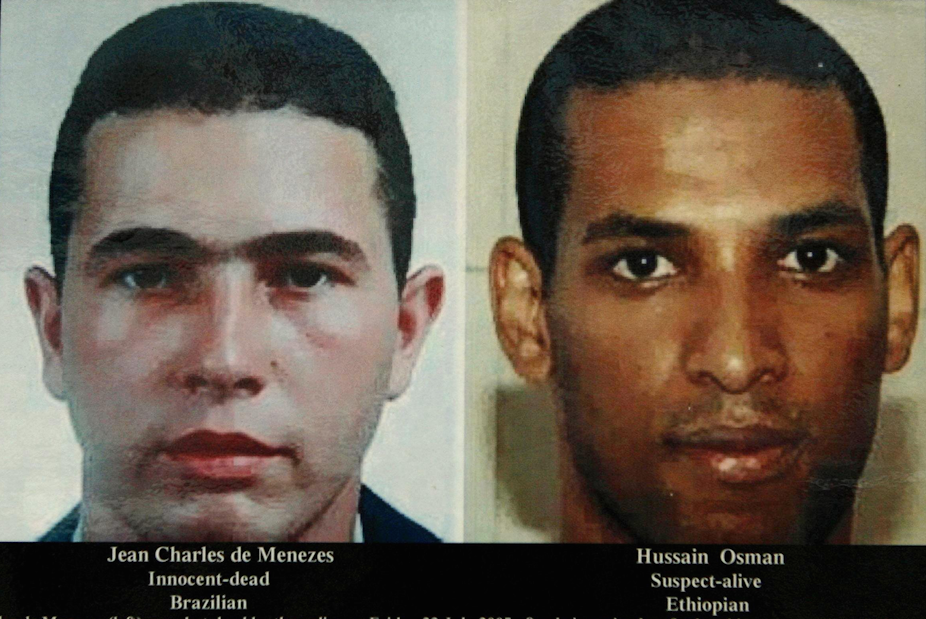It was ten years ago that the Metropolitan Police killed Jean Charles de Menezes at Stockwell station in south London in a case of mistaken identity. The family of the Brazilian electrician are still fighting for justice at the European Court of Human Rights in Strasbourg. Police procedures were overhauled, but an uncomfortable truth will not go away. We have not learned much about face recognition since then. It is hard to be confident that the same thing could not happen again.
The events on July 22 2005 in south London followed the 7/7 attacks on the underground that had killed more than 50 passengers two weeks earlier. A second attack took place on July 21, but only the detonators exploded and the terrorists escaped. A massive police hunt was launched. A gym membership card with an address in Scotia Street, Tulse Hill, was found in one of the unexploded backpacks – the same block where 27-year-old de Menezes happened to live.
CCTV images showing the suspects had been circulated. When one of the surveillance officers on Scotia Street saw the Brazilian coming out of the flats, he flagged him as a potential match for the suspect. A series of flawed procedures ensued, leading ultimately to the shooting at point blank range of an innocent man.
Then as now, we are good at recognising familiar faces. We first identified the brain structures dedicated to face perception at the turn of the millennium with functional magnetic resonance imaging – more commonly known as fMRI. Researchers argued that the brain has specialised systems for faces, pointing to their importance for social interaction and mate selection.
We can recognise familiar people from bad quality images, and even from photos that have been stretched. As anyone who has strolled along the banks of the Seine in Paris can attest, we can identify people from caricatured line drawings. All of these abilities are impressive and imply that we are experts at face recognition. The problem is that when it comes to recognising unfamiliar faces we do not do so well.
Research shows that we get it wrong with unfamiliar faces around 30% of the time, even when somebody stands in front of us holding a fake ID. When two unfamiliar photographs are placed side by side and we are asked to decide whether they depict the same person, we still get it wrong just as often. Recently a study even showed that Passport Control officers do not fare any better than university students: all they do is take more time over their decisions.
Despite this, photographic identification is still the main way that terror and criminal suspects are identified. And in court cases there is still great weight placed on eyewitness testimony, particularly in how confident a witness claims to be.
Recognition in future
So what can we do to ensure that innocent people are not misidentified again? One solution is to identify people who are much better than average on tests of face recognition. It is inferred that about 1%-2% of the population are extremely good at recognising faces. These so-called “super recognisers” can remember about 80% of the faces that they encounter in daily life. Security services are currently looking for such people to help them identify people from CCTV or pick people out of large crowds.

If Britain is faced with another large-scale suspect hunt in future, super recognisers might be employed to make crucial decisions to avoid a fatal misidentification. In tandem, researchers have a role to play too. Research suggests that biometric measures such as iris scans might be more useful than photographs for identifying faces, for example.
In our lab at the University of Stirling we are looking at what can be done to improve face recognition for unfamiliar faces. We are investigating brain function during face recognition to see if familiar and unfamiliar faces are recognised using different retrieval processes, and exploring how mnemonic strategies identified from memory research can be used to improve unfamiliar face recognition. For example if you thought about what hobbies a person might have when studying their photo, it might help to form a more stable memory representation that could be recognised as easily as a familiar face.
There has also been some interesting work into face matching led by Mike Burton at York University. My understanding is that they have found that training in face matching improves performance, but that individual differences are huge. The conclusion seems to be that security services should recruit people with natural ability – which again points to the value of super recognisers.
So although we are barely any further forward in the ability of the police to avoid disaster, there is at least the prospect of employing super recognisers and improving police training in future. That way, the type of misidentification that led to the death of Jean Charles de Menezes might eventually be easier to avoid.

